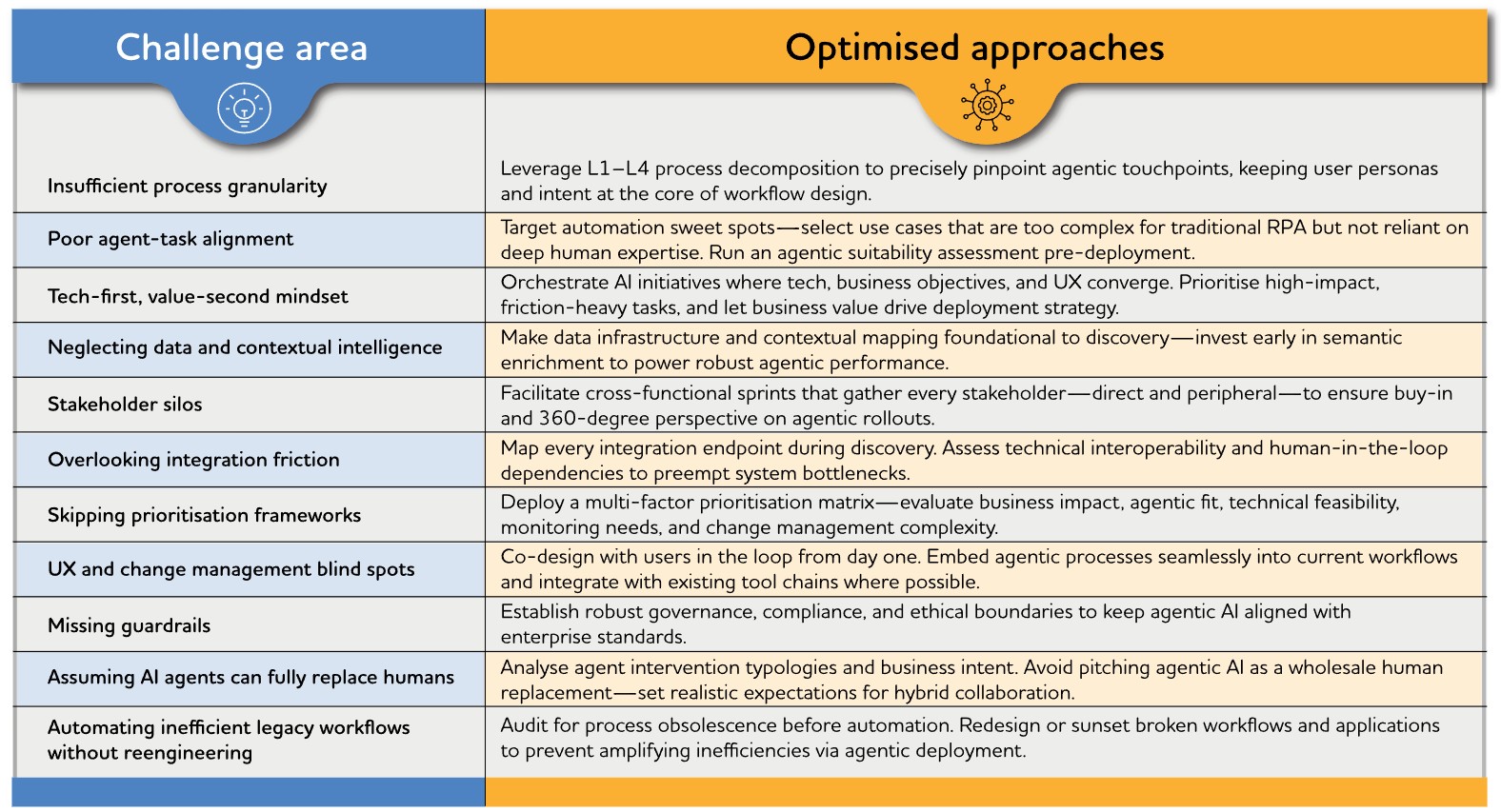Highlights
- The consumer packaged goods and distribution industry is undergoing a major transformation, moving away from traditional AI approaches toward the implementation of autonomous agents.
- A data-driven, systematic framework is paramount to enable precise identification of processes and decision nodes where autonomous technologies can drive quantifiable business value.
- A structured methodology, underpinned by robust industry best practices, for mapping the autonomy spectrum and ensuring alignment between agent capabilities and specific business objectives is critical for the success of the transformation.
- The framework should optimize use case selection and prioritization to maximize organizational impact and accelerate value realization.
On this page
The agentic shift is transforming traditional AI use cases
Identifying agentic artificial intelligence (AI) use cases in consumer packaged goods (CPG) organizations demand moving away from traditional automation and classical AI approaches.
It requires a paradigm shift in how we view human-machine collaboration within business processes. Unlike predictive or classification-focused AI, or rule-based automation such as robotic process automation (RPA), or generative AI (GenAI), which generates content based on predefined instructions only, agentic AI introduces autonomous agents that proactively execute tasks, make decisions, and adapt contextually. This requires a granular decomposition of business processes—down to level 1 through level 4 (from the highest process level to the lowest process grains)—to pinpoint areas where autonomy can deliver measurable value, such as multi-step reasoning, human judgment, or cross-system coordination.
Effective use case discovery involves mapping the autonomy spectrum, defining interaction boundaries, and aligning agent capabilities with business requirements. It is essential to evaluate intervention types, decision criticality, and compliance needs to ensure agents operate within appropriate control frameworks. The process must also consider integration with existing enterprise applications and adaptability to evolving environments. Hence, the discovery process must incorporate frameworks that account for intervention types, autonomy fit, decision criticality, existing enterprise applications and tools, relevance, and environment adaptability. Agentic AI use case discovery is, therefore, fundamentally more strategic, cross-functional, and dynamic than conventional AI initiatives.
Uncovering agentic intervention points
A fundamental prerequisite for identifying effective agentic AI applications is thorough comprehension of an organization's business processes.
A critical criterion for surfacing high-impact agentic AI deployments is a deep-dive audit of an enterprise’s operational workflows and tech stack. By aligning agentic AI’s autonomous orchestration capabilities with workflows characterized by high latency, manual hand-offs, or fragmented data silos, organizations can ensure maximum return on investment (ROI) and operational uplift. The targeting methodology should be anchored in a systematic, key performance indicator (KPI)-driven assessment that prioritizes domains where autonomous agents deliver outsized business outcomes and plug seamlessly into the existing cloud-native or hybrid infrastructure. There are six main tasks in operationalizing this paradigm (see Figure 1 and Figure 2).
Framework and best practices for agentic AI use case selection
Within the agentic AI use case blueprint, leveraging a robust prioritization matrix and codified best practices is critical for optimizing ROI and deployment velocity.
Agentic AI scenarios often involve advanced levels of autonomy, decentralised decisioning, and seamless orchestration across integrated enterprise workflows—demanding precise scoping and rigorous risk mitigation. It’s paramount that agent interventions align strategically to business objectives, institute comprehensive governance protocols, and maximise enterprise-wide value creation, all while ensuring technical scalability and adaptive resilience.
Core dimension of use case prioritization:
- Potential value: Projected lift across priority enterprise KPIs—think ROI, process velocity, digital operations efficiency, frictionless CX and UX, and strategic objective alignment.
- Agentic AI suitability: Degree of fit for autonomous agent deployment—assess autonomy threshold, intervention archetype, cognitive load offloading, and modular reuse potential.
- Technical feasibility: Enterprise readiness for deployment—evaluate workflow complexity, process frequency and scale, data richness and accessibility, systems interoperability (APIs, microservices, event mesh), dependency mapping, observability, and feedback loop potential.
- Risk profile: Map out implementation blockers—disruption risk, attack surface expansion, compliance friction, ethical vectors, and security posture.
- Change management complexity: Organizational lift for activation—model user adoption risk, autonomy culture baseline, skilling and enablement bandwidth, organization-wide impact surface, and orchestration overhead.
Best practices for use case identification:
Embedding agentic AI into the organizational DNA
Integrating agentic AI into organizational DNA demands a systematic, tech-forward strategy for use case discovery.
This means decomposing complex business processes, pinpointing high-impact intervention zones, and aligning advanced AI capabilities with a spectrum of workflows. By tightly coupling AI deployment with actual business pain points and leveraging an intelligent, multidimensional prioritization framework, organizations can maximize value delivery and future-proof their operations.
Looking ahead, it’s not just about isolated use cases—it’s about architecting enterprise-spanning, agent-augmented workflows, redefining roles, and unlocking innovative business models powered by autonomous systems. Successful agentic AI starts with identifying a high-leverage use case that demonstrates both technical viability and business ROI. Institutionalizing a discovery engine for these use cases and embedding it in the enterprise AI lifecycle ensures scalable adoption and continuous value creation across the organization.

